Up Next

Watch Fernando Alonso carefully at the start of the next Formula 1 race you see. There’s a good chance he’ll do three things on the opening lap.
First, he’ll get a good launch. Likely a very good launch.
Then, depending on a few factors that he’ll weigh up in the blink of an eye – his starting side of the grid, the quality of his start, the quality of others’ around him, probably some others that only he’s aware of – he’ll commit to the inside line or the outside. There will be no hedging his bets in the middle of the road where he will be at the mercy of others.
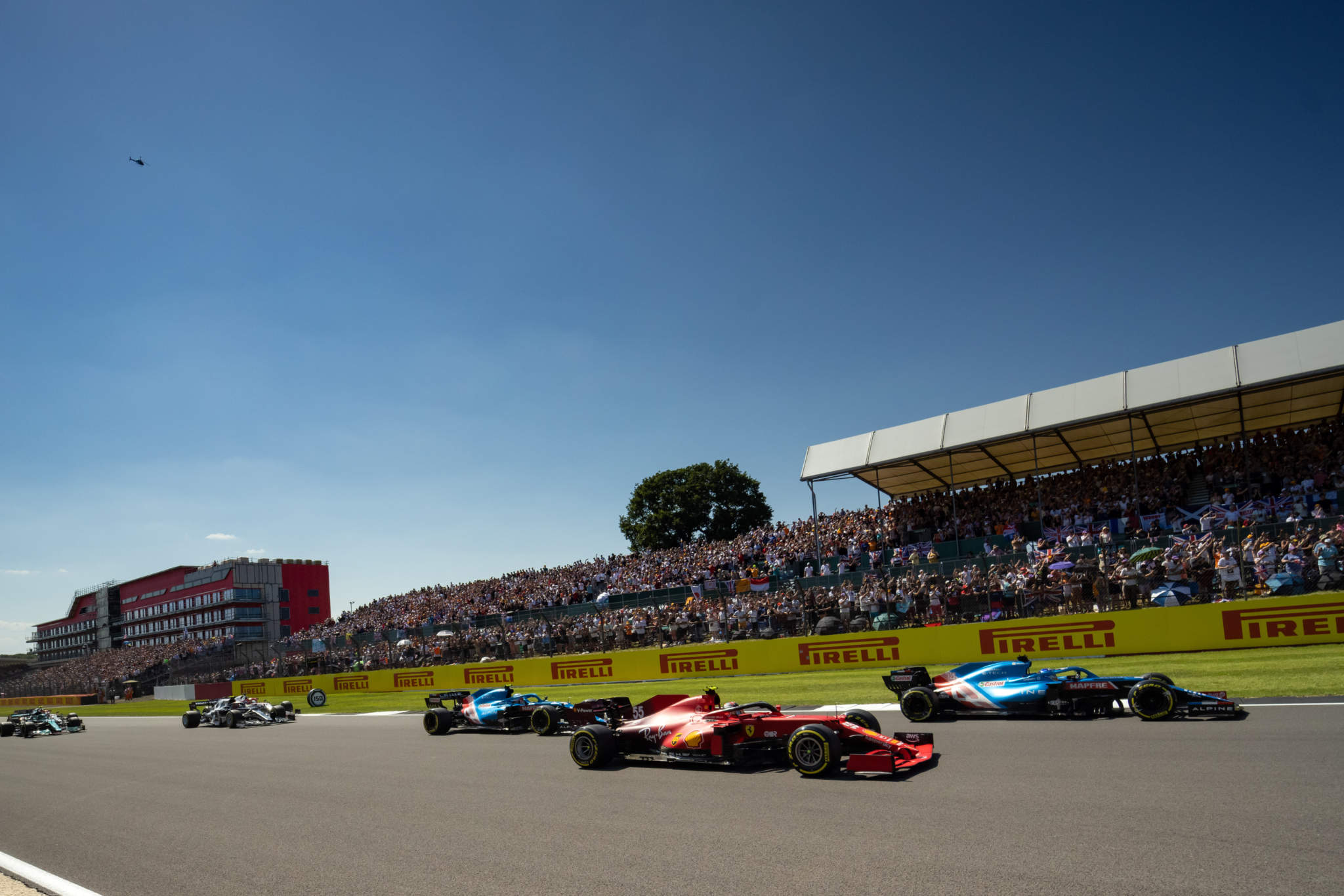
And finally, whether it’s at the first major braking zone or somewhere else around the lap, he’ll spy a gap on the outside and he will fill it, braking late to take advantage of the cars getting boxed in on the inside.
This combination has been at the heart of some of Alonso’s finest moments this season, notably the epic charge in F1’s two-lap restart at the end of the Azerbaijan Grand Prix and his opening-lap heroics in the inaugural sprint race at the British Grand Prix.
“I congratulate him for making it pretty exciting,” said McLaren’s Daniel Ricciardo after Alonso’s aggressive decision to complete the sprint race on softs – one of only four to do so – facilitated his rise from 11th to fifth in half a lap at Silverstone.
Fernando Alonso pushing hard on Lap 4 last Sunday 💪#BritishGP 🇬🇧 @emirates #FlyEmiratesFlyBetter pic.twitter.com/roBMKB9yg5
— Formula 1 (@F1) July 20, 2021
“His start was phenomenal and kept us on our toes. It’s cool to see, there’s always the question, with any sport, is age a factor? And his racecraft this year has probably been the best on the grid. At least at times.
“So, it’s cool to see, if you’re still got a passion and a real drive for it, you can keep doing it at a very high level.’’
Alonso had no shortage of fans after that display. Alpine’s executive director Marcin Budkowski said: “It’s him just being clever and a bit of a fox in exploiting every opportunity on the track. We know his racecraft is second to none. He is exceptional at that.
There are restarts
And there is @alo_oficial in Baku on Sunday 🚀👌🔥#AzerbaijanGP 🇦🇿 F1 pic.twitter.com/MVk8BfoVex
— Formula 1 (@F1) June 7, 2021
“We’ve seen it in Baku with Fernando, when he smells blood, he just goes for every possible gap and every opportunity.”
Mercedes boss Toto Wolff concurred: “Alonso is just a pleasure to watch. Inside, outside, inside, outside. He just goes everywhere.”
As his comeback season has progressed Alonso has become incredibly impressive at judging those moments well. In analysing every one of Alonso’s opening laps in F1 2021 – and his race restarts – we begin to understand the choices he makes in crunch situations and how it sets him up to achieve what he is achieving.
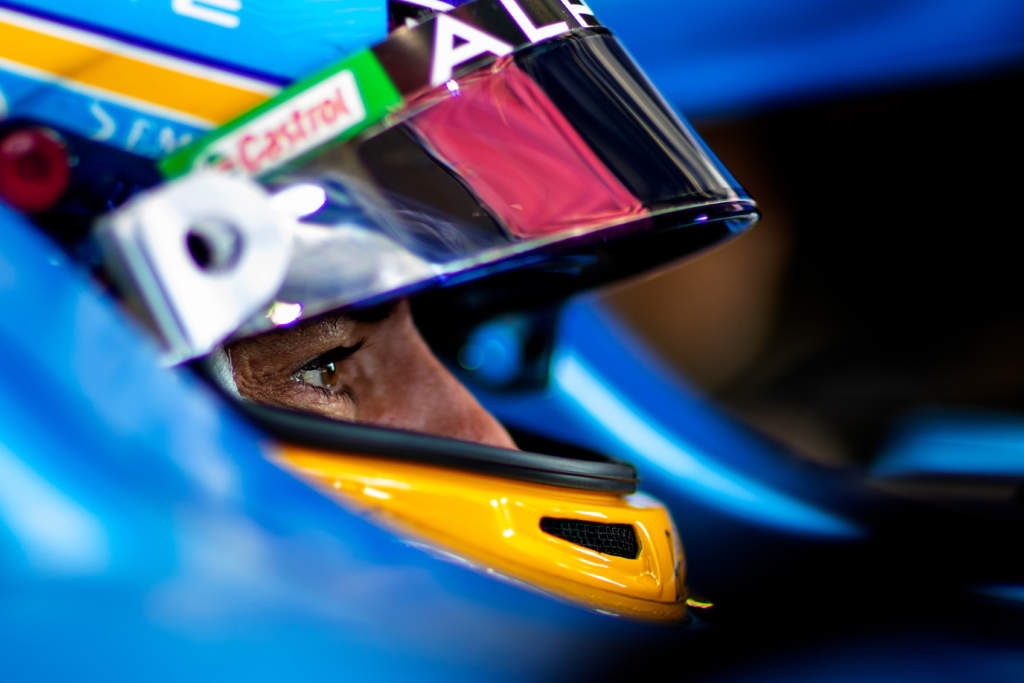
Focusing on the starts and restarts is deliberate. Alonso described his opening lap of the Silverstone sprint race as “really intense – only 45 seconds or one minute of high-intensity”. That’s the window in which make-or-break moments occur given how much modern F1 is dictated by track position.
First, a few broader observations. In every one of Alonso’s starts and restarts – 17 across 10 events – he is never once in the middle of the road into the first corner. He’s never once pinched between two other cars. He is always on the inside or the outside and in control of his own trajectory and speed.
Second, Alonso hasn’t finished the first lap in a lower position than he started since the Portuguese Grand Prix. In the last seven races he has either held position or moved forwards – although he was slightly fortunate in Britain as an uncharacteristically slow start, arguably his only ‘bad’ one of the year in dry conditions, dropped him behind Sebastian Vettel and he needed Max Verstappen’s crash to regain seventh.
Finally, whether on the opening lap or not, Alonso behaves impeccably. His judgement is usually so sublime he doesn’t need to get his elbows out anyway – but given the chance, he tends to opt against running a rival out of road. If the other car merits space, Alonso gives it. He just doesn’t give a millimetre more than he feels he needs to.
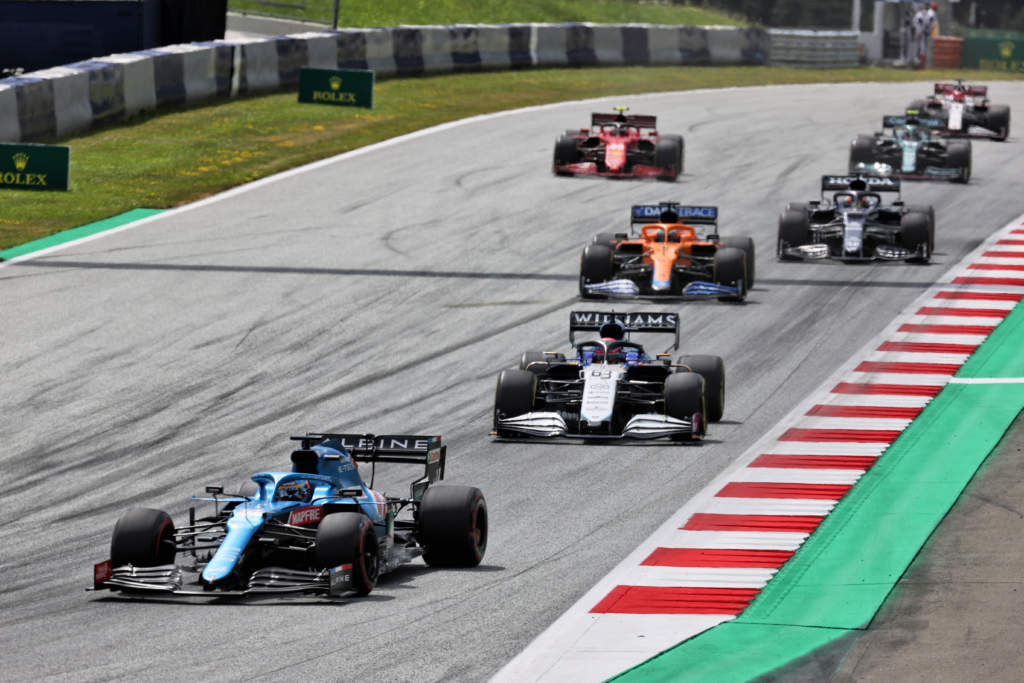
This unflinchingly fair approach is almost certainly why he was so angry in Austria with drivers going off-track at Turn 1 to stay ahead when he attacked on the inside. But we’ll come to that shortly.
Assessing Alonso’s first-lap racecraft more specifically, as the season has progressed it has become clear that he had some rust to get rid of. He kicked off his comeback well enough in Bahrain with a good start and decent opening stint but he did also misjudge the safety car restart, leaving himself without a big tow down to Turn 1. Fortunately he didn’t pay for that small error.
Imola was Alonso’s nadir, so he got that out of the way early. A slow start in second gear on intermediates, on a damp track, kicked off a very tentative first lap in which he was passed by an Alfa Romeo, AlphaTauri and a Haas. He was also absolutely nowhere at the first safety car restart, lagging well behind the cars in front.
The conditions obviously played a part in exaggerating the situation but nevertheless, this was a good representation of Alonso’s conservative early-season approach.
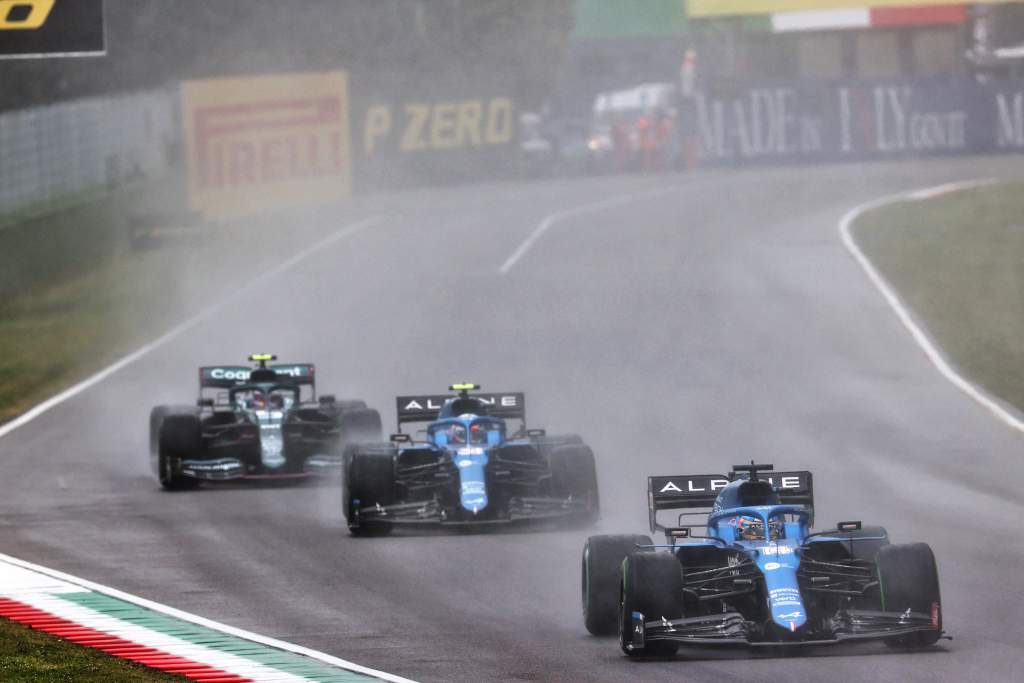
“The first couple of weekends, Bahrain, Imola it was like everything was starting from zero,” he says. “I was very cautious on many things and tried not to make mistakes for the team.”
There was already a clear correlation between Alonso’s increasing familiarity with the Alpine A521 and his wider re-acclimatisation to F1, and his results. The current run of five consecutive points finishes speaks to that.
Alonso’s race starts and his wheel-to-wheel judgement slot neatly into his general progression. It’s hard to say how, exactly, but it’s a self-fulfilling situation: he’s growing in confidence, he’s driving instinctively, he’s getting good starts, he’s running in a better position, he’s scoring good results, he’s growing in confidence…
The third round of the season was the last of Alonso’s ‘backwards’ opening laps. It started decently but then deteriorated in quality as he ran wide at Turn 4 – amusingly passing George Russell using the run-off, a tactic he would rage over a few races later – and he locked up at the Turn 5 hairpin too, which cost him further ground.
But a few laps after that, as the safety car returned to the pits, he indicated he’d learned from his Bahrain and Imola experiences with a very good restart. And the rest of his race was excellent.
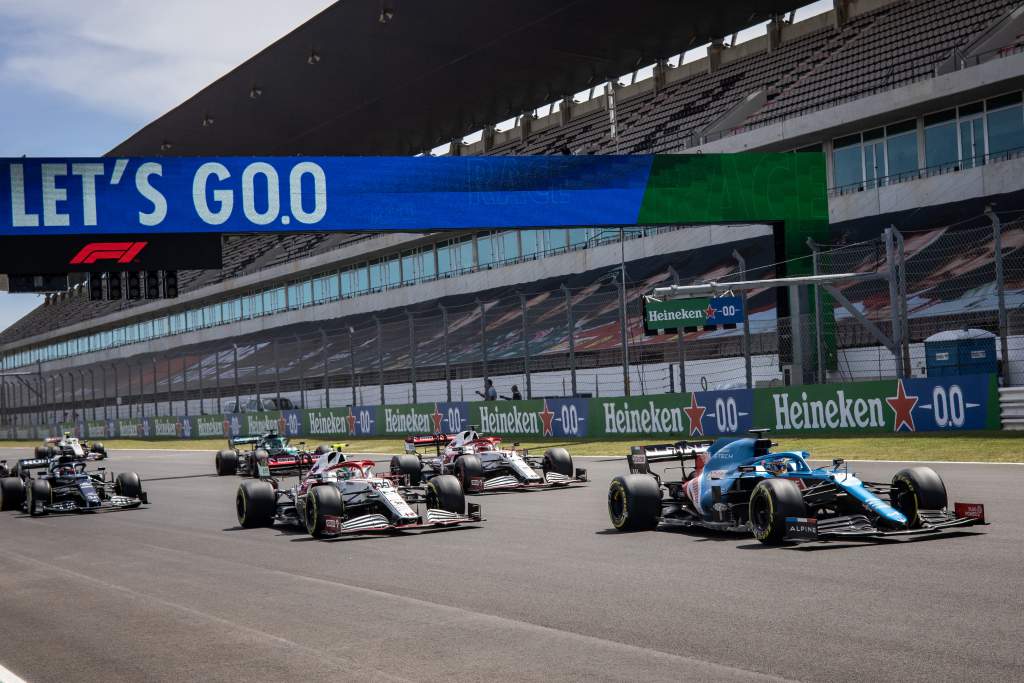
Though the Portuguese GP preceded a short-term dip in results for Alonso and Alpine, his racecraft was still impeccable.
His starts in Spain and Monaco were great – on the streets of Monte Carlo he’d passed Yuki Tsunoda almost instantly and then used the outside line at Ste Devote to pass George Russell’s Williams, although he needed superhuman reflexes to stop a snap up Beau Rivage turning into a nasty crash.
The Baku restart at the end of the grand prix is well worth finding Alonso’s onboard for. He wasn’t the hero of the two-lap dash. It was a precursor to the Silverstone sprint – 45 seconds, maybe a minute, of intense focus being rewarded with place after place: off the line, into Turn 1, into Turn 2, and then best of all a lovely around-the-outside move on Tsunoda into the fiendish Turn 5/6 chicane that tightens awkwardly.
He's pretty good at these race starts, isn't he? 🚀@alo_oficial absolutely aces it at lights out in the F1 Sprint #BritishGP 🇬🇧 #F1 pic.twitter.com/RpA4JnDr1v
— Formula 1 (@F1) July 17, 2021
In France and Austria (x2) Alonso put his tried-and-tested first-lap tactics to good use again, although the end result wasn’t always in his favour as in France he was monstered by a mega tow Leclerc had behind him down the back straight and in Austria, both times, his efforts were undone by drivers taking liberties with the run-off at Turn 1.
At Silverstone, in the sprint race, Alonso described his charging first lap as “a combination of things”. That combination was essentially the best of all his techniques this season. “Carlos [Sainz] I did at the start, Sebastian [Vettel] at Turn 1 [around the outside]. Then some high-risk manoeuvres, one with the McLaren [Ricciardo] and Perez into Turn 4 then Perez again in Turn 6 [on the inside], [Lando] Norris in Turn 9 [on the outside!].
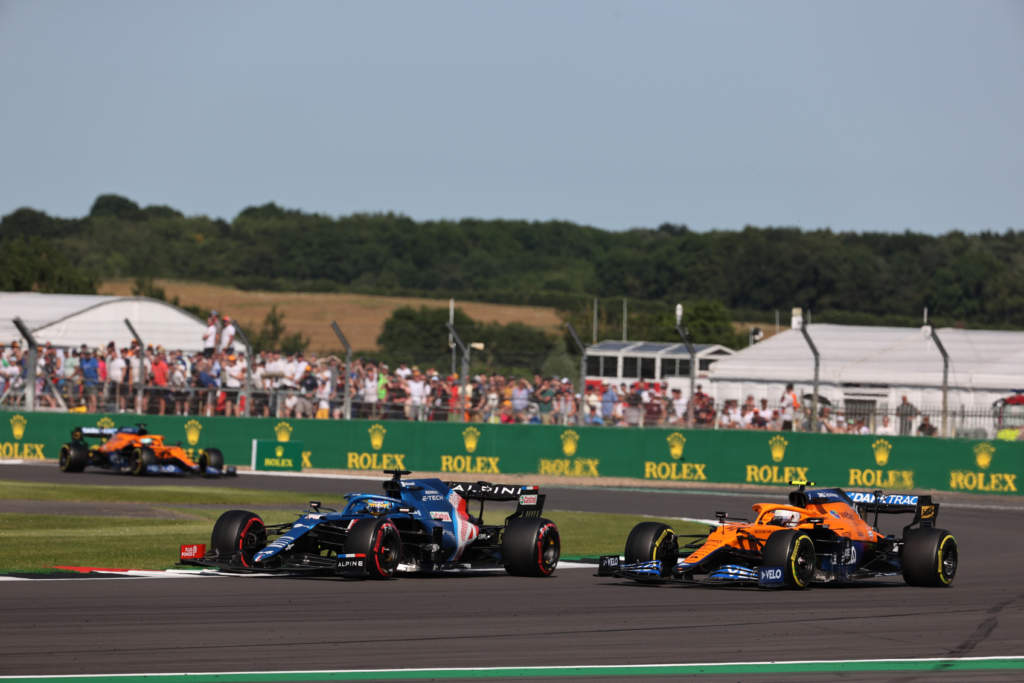
“I guess if you are fighting for the championship, I will not make those manoeuvres because there is more to lose than to gain but we are in a position where we can take more risk and benefit from the tyre first lap performance.
“It was one of the best [opening laps of his career]. There were some good ones before, especially in the Renault days with very good starts. But this one was not only the start, it was a more complete lap.”
As many of his opening laps this season have been. But there’s another side to Alonso’s game that is keep his skills razor sharp. He is very perceptive when things don’t go as he anticipates, very quick to learn something and use it as his own weapon.
One example we’ve already mentioned, by fixing his sluggish restarts from the first couple of races. But a much more interesting example came at the Red Bull Ring, as one weekend he launched a fantastic move to pass Pierre Gasly and Charles Leclerc into Turn 1 at the start, and the next did the same to nail Carlos Sainz and Daniel Ricciardo – only to lose out on the exit of the corner each time because other drivers kept their foot in and took to the run-off.
Alonso felt like an “idiot” after that, and while his radio rants at the time – and post-race comments – were entertaining and justified in equal measure, it wasn’t just something he raged over and then moved on from. He adopted the technique.
It’s why at Silverstone he talked about embracing the “dark side” – by that he simply meant that if the way F1 is regulated now means there is more grey area than he’d like regarding track limits, then he will stray into the grey.
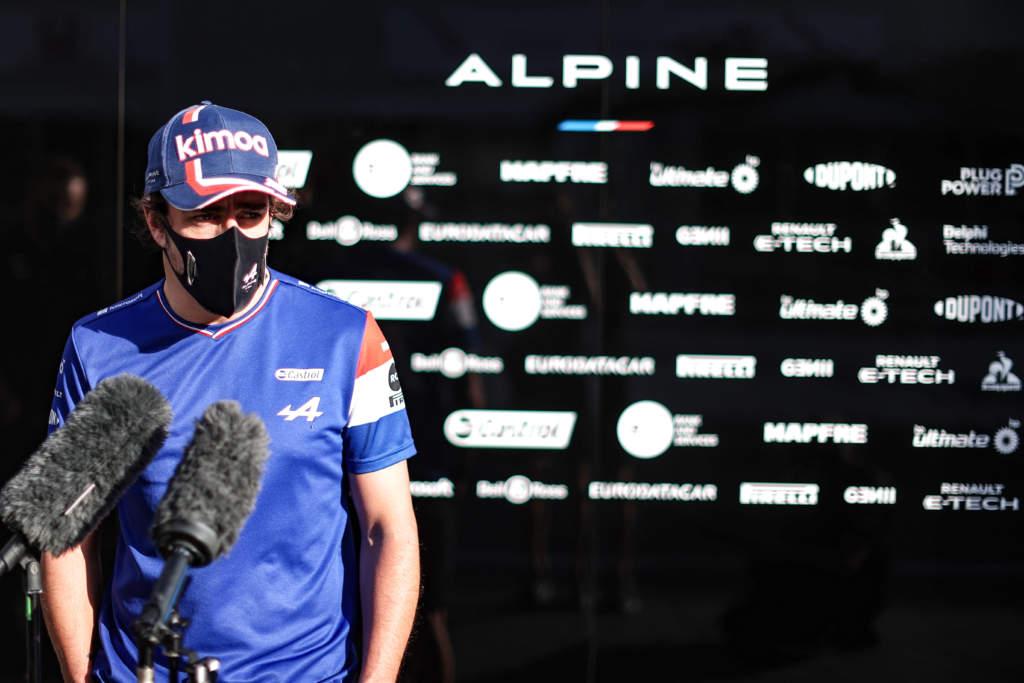
Want proof? During his mesmerising sprint race charge he passed Norris around the outside into Copse. In the end he kept it on-track easily, aided by his soft tyres, but he indicated he’d have been happy to run wide and complete the move off-track if necessary given that was the precedent set in Austria.
His interpretation that this is not unfair, just ‘what everybody else is doing’ is consistent with his belief he is a clean driver. And everything he’s shown so far this season supports that. In fact, let’s return to the Austrian GP for one final case study.
In a race where Norris created headlines by running Sergio Perez off-track at Turn 4, then Perez did the same to Leclerc at Turn 4 and also Turn 6, Alonso managed to go wheel-to-wheel with Kimi Raikkonen and George Russell through those corners without the car on the outside being forced through the gravel.
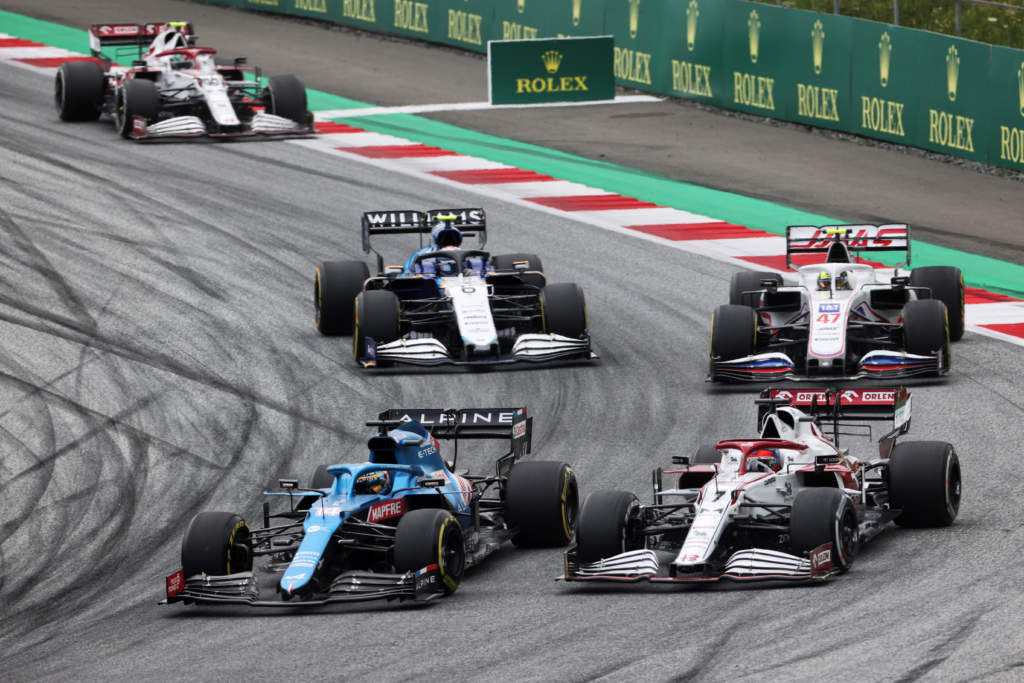
In fact, the onboard footage of Alonso’s attempt to defend from Raikkonen is exquisite. There is no space at all between Alpine front left and Alfa Romeo endplate, nor is there space between Alfa Romeo front left and the gravel on the outside. Alonso gave a car’s width and nothing – honestly, nothing – more. It cost him a place in the end. But he fought fair.
That’s been the case throughout the season. Every start or restart Alonso has remained completely in control – often aggressive but always in control. He’ll go to the edge of the rules in combat but never over them. He’ll learn where others are pushing the limits more than him and do the same.
Alonso hasn’t been perfect. His slow getaway in the British GP did leave him vulnerable even if he did use all his usual techniques to regain ground and minimise the damage. But the main thing is that his driving holds up seriously well to scrutiny.
This combination of confidence, instinct and intelligence is a potent one. Now he’s hitting his stride, the very best of Alonso is coming to the fore.
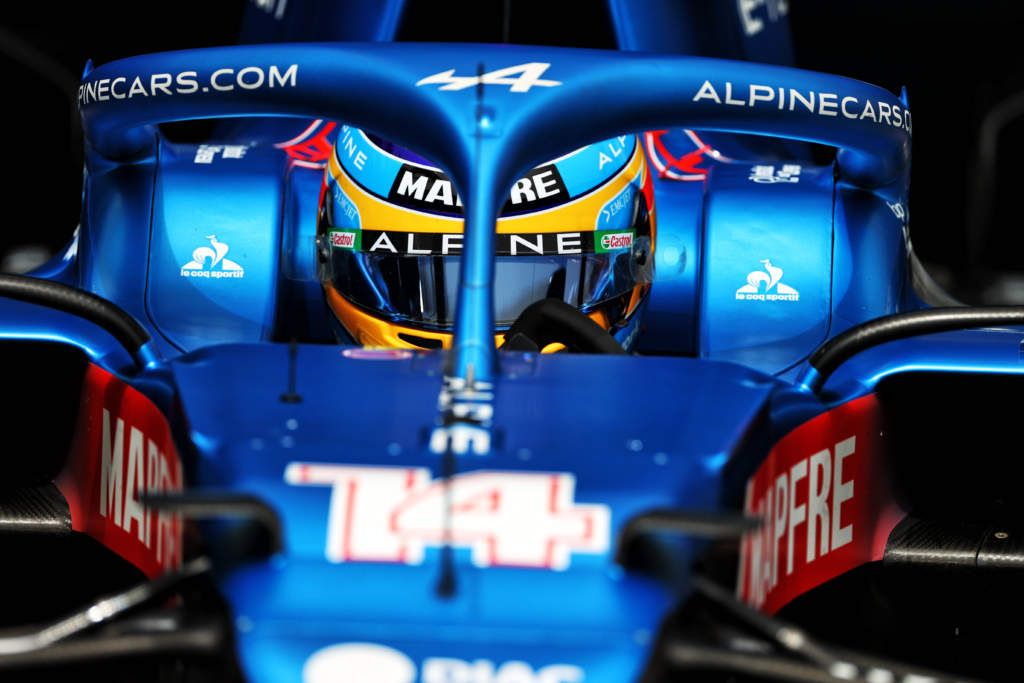
“I feel good, I feel more confidence now in the car,” he says when asked by The Race how he judges his own racecraft and how it has improved since the start of the season.
“At the beginning of the year I needed a couple of races to get used to everything. Not only for F1 itself, it was also the Renault. I think if I was jumping back on the McLaren style, the McLaren steering wheel, etc I could maybe shorten that adaptation. But with Renault it was a little bit more work to be done.
“In the first races I was quite careful, I didn’t want to make a big mistake. Everyone was saying, ‘Let’s see how Fernando does after the different categories and coming back to F1’, ‘It will be not easy’, or ‘It will be easy’, ‘What do you think about the new generations?’ – all these things.
“I just wanted to execute the races with no mistakes and slowly build up the confidence. And now that I have more confidence and more knowledge about the car and about the team and about the tyres, I can drive without too much thinking.
“I just can use instinct because everything is coming automatically. I’m happy for that.”
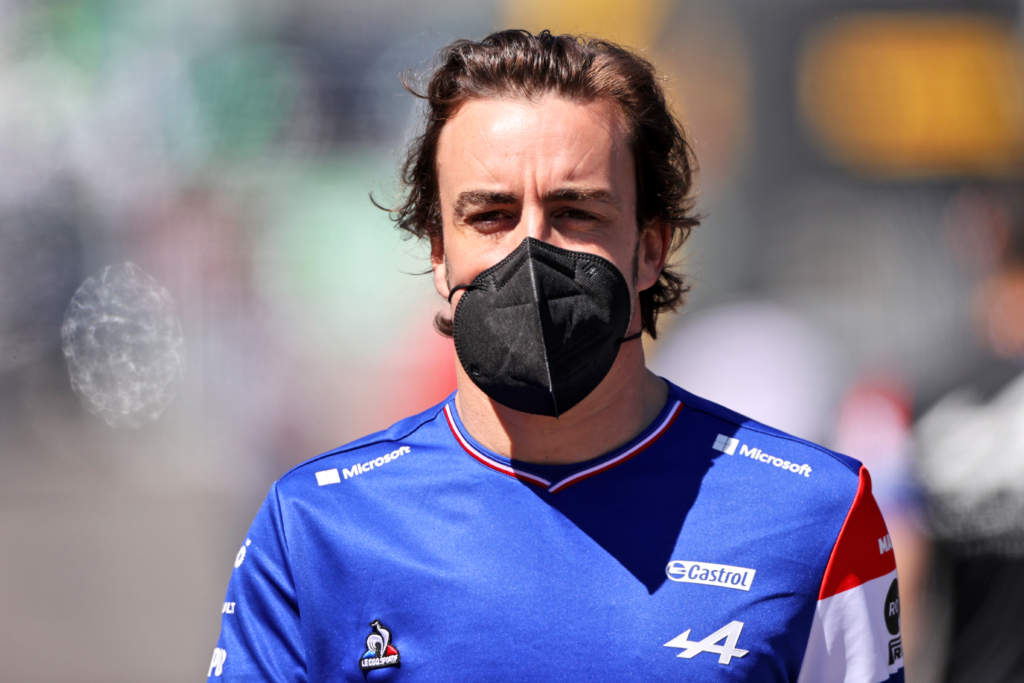
As well he should be. His instinct is evidently of a rare type. If the geniuses creating artificially intelligent racing cars were trying to recreate a human racing brain, they’d do well to try to replicate Alonso’s.
There is a lot of credibility to the claim that Alonso has the best racecraft of any driver in F1. His CV and his reputation prior to his sabbatical would indicate that should be no surprise.
But, as he approaches his 40th birthday, it’s simply impressive.
It’s a mark of Alonso’s enduring ability and commitment to be at this level, so consistently, less than halfway through the first season of his second F1 career.





